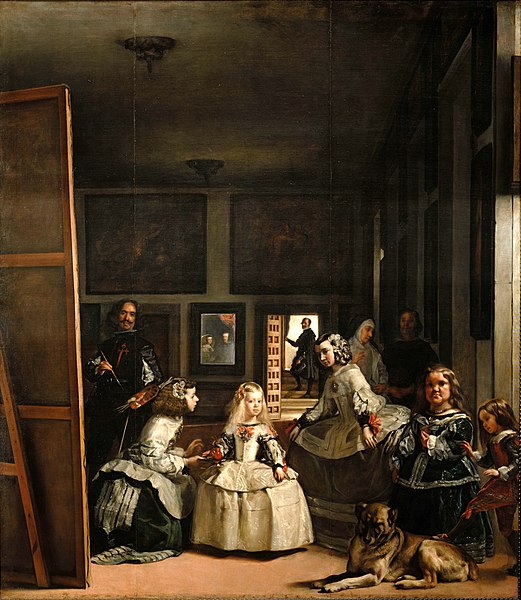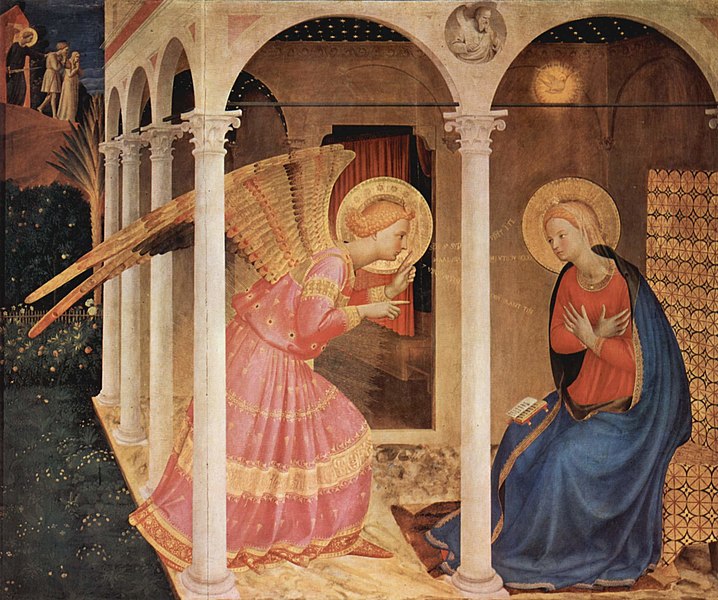All AP Art History Resources
Example Questions
Example Question #521 : 2 D Art
The Dutch artist Rembrandt van Rijn was particularly noted for his ability to __________.
use abstract images and shapes
make sharp contrasts between dark and light
use symbolic imagery
use classical themes
make sharp contrasts between dark and light
Rembrandt van Rijn was perhaps the greatest Dutch master of the seventeenth century, notable for his portraits and paintings on biblical themes. Rembrandt's themes and subjects were almost provincial, but his style built on Italian baroque painting that used strong contrasts. Rembrandt's ability to use darkness and shadow in unique and interesting ways is particularly notable.
Example Question #1 : Seventeenth And Eighteenth Century 2 D Art
The painting shown in Figure 4 portrays a(n) __________.
geologist
priest
king
astronomer
astronomer
Johannes Vermeer did title his painting The Astronomer, but the painting also gives many clues as to the nature of the individual's profession. The placement of the man working in a study with tools indicates he was some kind of scholar, and not a notable figure in his society. The use of a globe, and his looking out a window, indicate his interest in astronomy, which in the seventeenth century utilized "celestial globes" portraying stars.
Figure 3: The Night Watch by Rembrandt van Rijn (1642)
Figure 4: The Astronomer by Johannes Vermeer (1668)
Example Question #2 : Seventeenth And Eighteenth Century 2 D Art
The image shown in Figure 3 is remarkable for portraying __________.
light and dark contrast
members of the military
Dutch people
motion in a group portrait
motion in a group portrait
In one sense, Rembrandt van Rijn's The Night Watch is similar to many other Dutch golden-age works, focusing on light and dark contrasts, scenes of Dutch life, and celebrating Dutch unity against the Spanish in war. However, Rembrandt's sense of motion and movement stands out in this painting, with every figure in the painting doing something and interacting with each other and the painting's viewer.
Figure 3: The Night Watch by Rembrandt van Rijn (1642)
Figure 4: The Astronomer by Johannes Vermeer (1668)
Example Question #3 : Seventeenth And Eighteenth Century 2 D Art
The painting shown in Figure 4 creates depth by using __________.
anatomically correct portrayal of the human body
perspective
bright colors
a domestic scene
perspective
Perspective was still a relatively new innovation when Vermeer painted The Astronomer in 1668, having only been developed in the early sixteenth century in Italy. Vermeer's ability to portray the intense depth of the room shows his own mastery of perspective, and its utilization in painting.
Figure 3: The Night Watch by Rembrandt van Rijn (1642)
Figure 4: The Astronomer by Johannes Vermeer (1668)
Example Question #4 : Seventeenth And Eighteenth Century 2 D Art
The painting shown in Figure 1 is an example of __________.
Baroque painting
Neo-Classical painting
Medieval painting
Expressionist painting
Baroque painting
The Spanish painter Diego Velázquez was one of the leading lights of Baroque painting, and Las Meninas, shown here, is widely held as his masterpiece. The 1656 painting shows many aspects typical of Baroque painting, including highly mannered poses, a strict composition, and ornate detail.
Figure 1: Las Meninas by Diego Velázquez (1656)
Figure 2: Charles IV of Spain and His Family Francisco de Goya (1801)
Example Question #5 : Seventeenth And Eighteenth Century 2 D Art
Based on the content of the painting shown in Figure 2, it is most probably set in __________.
a royal balcony
the artist's studio
the royal dining room
the Princesses' bedroom
the artist's studio
Francisco de Goya's placement of himself behind an easel indicates the Royal Family stands in a room in which he is working, making "the artist's studio" the most likely choice, especially given the exhibition of other pieces of art in the room behind the Royal Family. This answer choice can be further confirmed by ruling out the other answer choices: nothing in the image suggests that it portrays a royal balcony, the Princess' bedroom, or the royal dining room. Plus, the members of the Royal Family in de Goya's painting look somewhat uncomfortable; this suggests that they are not in a space in which they would normally be, adding further evidence that the painting shows the artist's studio.
Figure 1: Las Meninas by Diego Velázquez (1656)
Figure 2: Charles IV of Spain and His Family Francisco de Goya (1801)
Example Question #531 : Ap Art History
Which of the following is a true statement contrasting the paintings shown in Figure 3 and Figure 4?
The use of light and shadow is much more pronounced in the painting shown in Figure 3 than in the painting shown in Figure 4.
The painting shown in Figure 3 uses duller colors than does the painting shown in Figure 4.
While both of the paintings use perspective, the use of perspective in the painting shown in Figure 3 is less developed and realistic than the use of perspective in the painting shown in Figure 4.
The painting shown in Figure 3 portrays more people than does the painting shown in Figure 4.
While both of the paintings use perspective, the use of perspective in the painting shown in Figure 3 is less developed and realistic than the use of perspective in the painting shown in Figure 4.
Caravaggio's Supper at Emmaus, painted in 1606, is like Fra Angelico's in that both men were Italian and the paintings are each of Biblical scenes. Yet the one hundred and fifty years between them demonstrates the revolution that happened in painting during the Renaissance. Caravaggio's work, emblematic of seventeenth century Baroque painting, has a sense of perspective that places Jesus well behind his disciples, and also places them in a realistic setting amid rich, dark colors. So, one can accurately say that the use of perspective in the Carravagio painting is more developed and realistic than the use of perspective in the Fra Angelico painting. The answer choices comparing the relative brightness of the paintings' colors and each painting's use of light and shadow are incorrect, as is the answer choice claiming that more figures are shown in the Fra Angelico painting than in the Caravaggio painting; the same number of figures are shown in each, though the three figures in the upper right hand corner of the Fra Angelico painting are easy to miss.
Figure 3: The Annunciation (Cortona) by Fra Angelico (1433)
Figure 4: Supper at Emmaus (Milan) by Caravaggio (1606)
Example Question #532 : Ap Art History
In the painting shown in Figure 4, the figure in green in the middle of the scene is __________.
Judas
Saint Peter
Jesus Christ
John the Baptist
Jesus Christ
Although not obviously marked out in any way, the figure in the middle of the Caravaggio painting is Jesus Christ. One clue is that this painting is entitled Supper at Emmaus, but the scene would be obvious to anyone familiar with the story from the Gospel of Luke, which many Renaissance-era Europeans would have been. The painting displays the wonderment of everyone around a serene bearded figure, who raises his hand in a traditional gesture of blessing associated with Jesus Christ.
Figure 3: The Annunciation (Cortona) by Fra Angelico (1433)
Figure 4: Supper at Emmaus (Milan) by Caravaggio (1606)
Example Question #533 : Ap Art History
In comparison to the painting shown in Figure 2, the subjects in the painting shown in Figure 1 are __________.
serious
uncertain
reserved
playful
playful
While de Goya based his painting on Velázquez', their portrayals of a royal family are completely different. Where Velázquez show the young princess Margaret Teresa smiling, with attendants and jesters trying to please her, de Goya shows only the royal family looking extremely uncomfortable. The seriousness of the family of Charles IV in a painting based on the playful Las Meninas was intentionally cultivated by de Goya.
Figure 1: Las Meninas by Diego Velázquez (1656)
Figure 2: Charles IV of Spain and His Family Francisco de Goya (1801)
Example Question #534 : Ap Art History

Figure 3

Figure 4
Figure 3 represents the King of __________.
France
Portugal
Spain
Scotland
Scotland
Figure 3 is Anthony van Dyck's triple portrait of King Charles I of England, Scotland, and Ireland from 1635. Charles inherited all of his crowns from his father James, and ruled all three beginning in 1625. Charles' reign was cut short after the English Civil War saw his subjects in England overthrow him and cut off his head in 1649.
Certified Tutor
Certified Tutor
All AP Art History Resources










